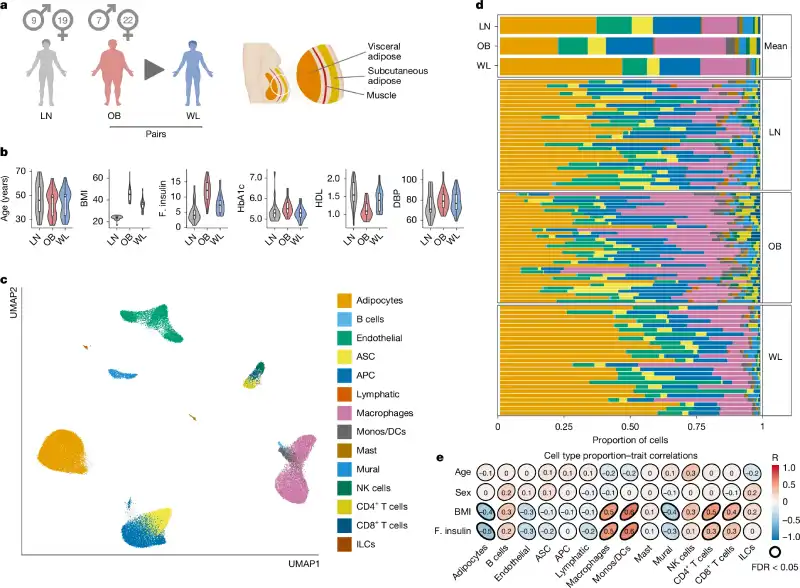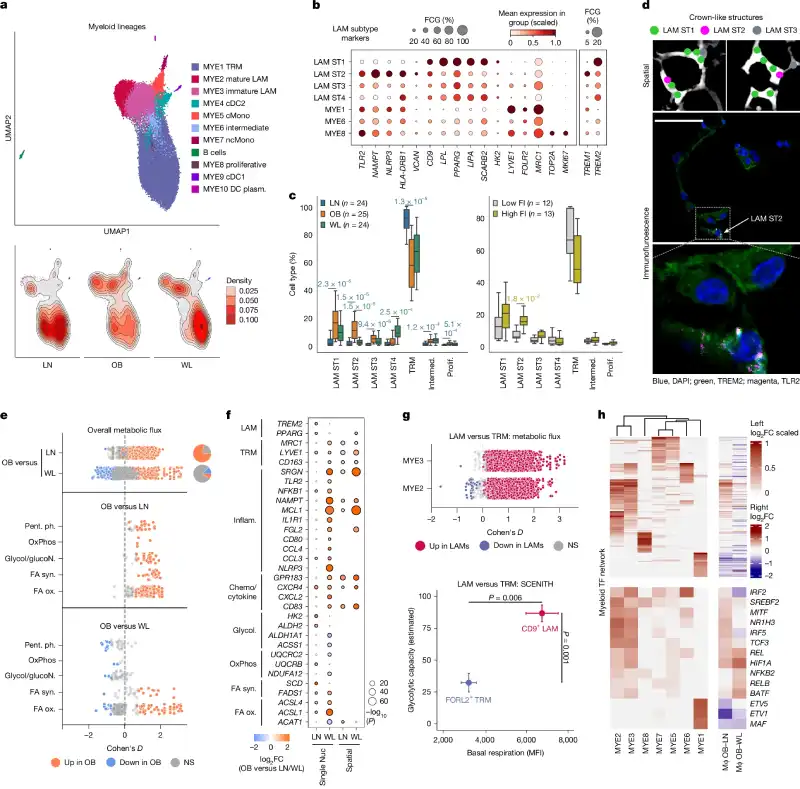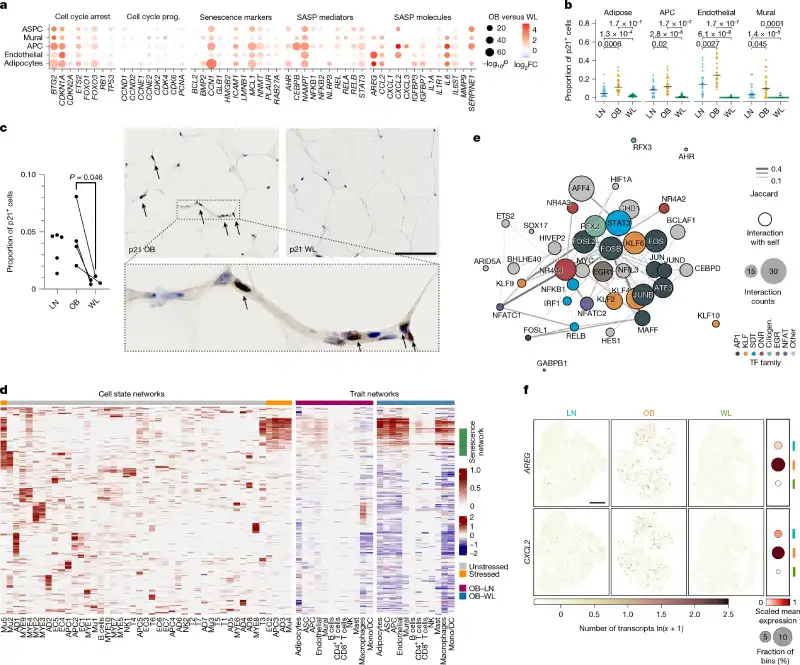Study Reveals the Benefits of Weight Loss on Adipose Tissue

Weight loss does more than just lower the numbers on the scale. According to a study published in the journal Nature, shedding pounds triggers a profound reconfiguration of adipose tissue, directly contributing to improvements in metabolic, cardiovascular, and immune health. The research analyzed cells from 70 individuals—before and after bariatric surgery—to understand, in detail, what happens to fat tissue during weight loss.
Using advanced cell sequencing and spatial mapping techniques, the scientists created an atlas with over 170,000 cell nuclei, allowing them to observe how different cell types behave in states of obesity and after weight loss. The main focus was the subcutaneous abdominal adipose tissue—a region strongly linked to metabolic risk.
Persistent Inflammation and Its Role in the Yo-Yo Effect
One of the study’s most significant findings was the persistence of certain types of inflammation, even after substantial weight loss.
The research showed that although the infiltration of macrophages—immune system cells—decreases after weight loss, these cells do not fully return to their “normal” state. They remain in a state of alert, which may promote weight regain and reignite inflammatory processes.
This helps explain why some people struggle to maintain their weight loss. According to the authors, these “pre-activated” cells act as a kind of inflammatory memory, ready to respond quickly to new fat accumulation.

Stressed Adipocytes and Cellular Remodeling
Another key point involves adipocytes—the cells responsible for storing fat. In individuals with obesity, these adipocytes become enlarged, inflamed, and subject to mechanical stress. This scenario impairs metabolism and contributes to diseases such as type 2 diabetes.
After weight loss, there was a significant reduction in these “stressed” adipocytes and an increase in cells with anabolic capacity—that is, cells capable of generating energy more efficiently. This suggests that losing weight reactivates the metabolic flexibility of the tissue, a condition essential for maintaining the body’s energy balance.
Cellular Senescence: The Silent Villain
One of the most surprising findings of the study was the identification and reversal of cellular senescence—a state in which cells lose the ability to divide, accumulate damage, and begin releasing inflammatory substances. This process, common in cells of people with obesity, was drastically reduced after bariatric surgery.
Senescent cells were especially present in adipocytes, precursor cells, and blood vessels. The elimination of these cells after weight loss suggests a powerful “senolytic” effect of losing weight—that is, the ability to remove aged cells that compromise tissue function.

The research also revealed that cells organize into specific niches within adipose tissue. In obese individuals, “cell stress” regions clustered inflammatory cells, dysfunctional adipocytes, and distressed vascular cells. After weight loss, these niches were dismantled or remodeled, indicating a functional reorganization of the tissue.
Additionally, significant changes were identified in cell-to-cell communication. Certain inflammatory signals—such as the protein NAMPT, associated with insulin resistance—were suppressed with weight loss. This points to a cascade of regenerative effects that go beyond simple fat reduction.
Although the study focused on individuals undergoing bariatric surgery, the authors believe that the mechanisms described may also occur with other effective weight loss methods, such as controlled diets and specific medications. The discovery of molecular markers and cell communication pathways paves the way for more precise therapies capable of accelerating the reversal of damage caused by obesity.
The study reinforces the idea that adipose tissue is highly dynamic and sensitive to lifestyle. More than just storing fat, it actively participates in the immune, hormonal, and metabolic balance of the body. Therefore, managing body weight is not just a matter of aesthetics—it is a crucial measure for restoring cellular health.






